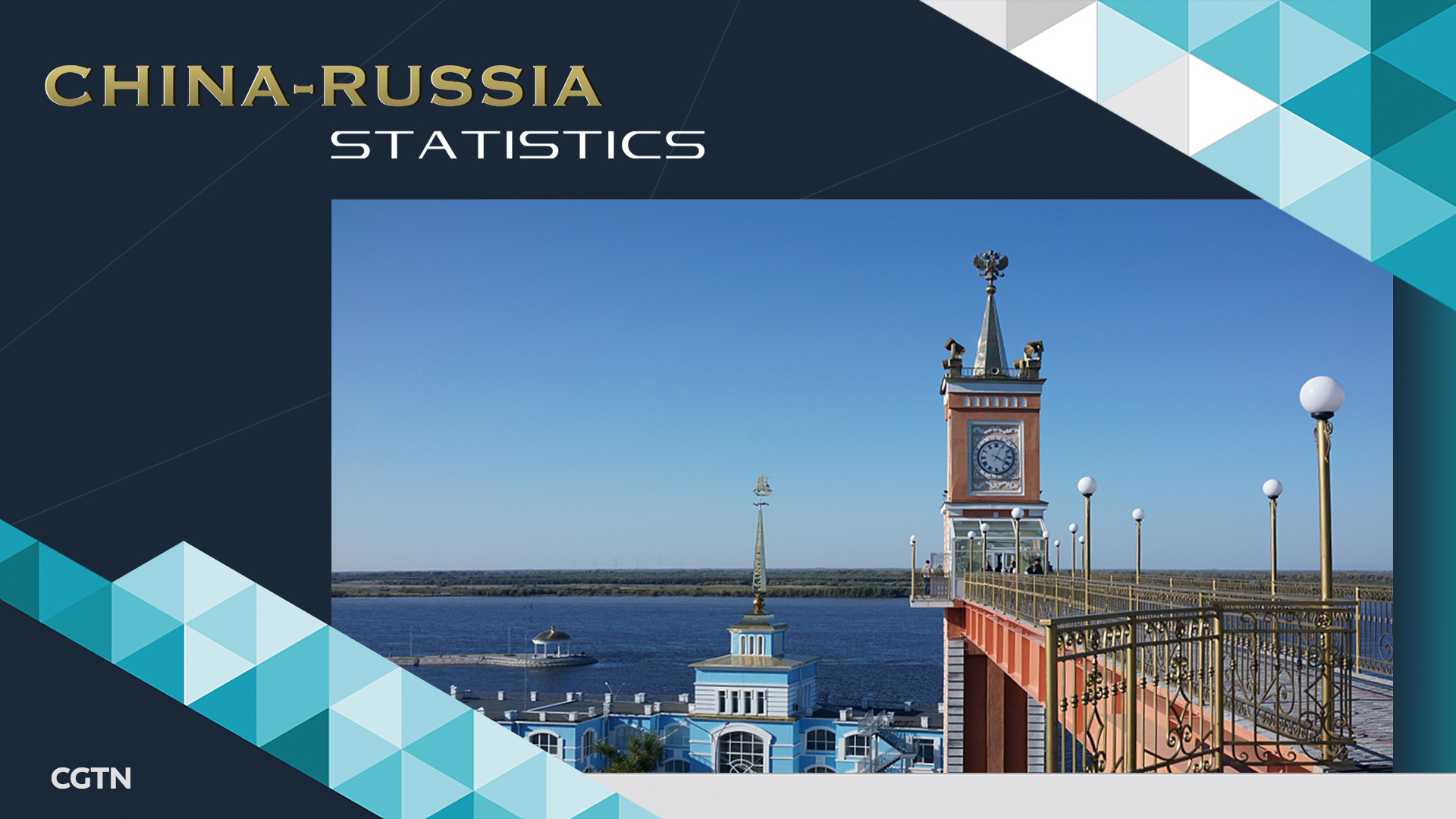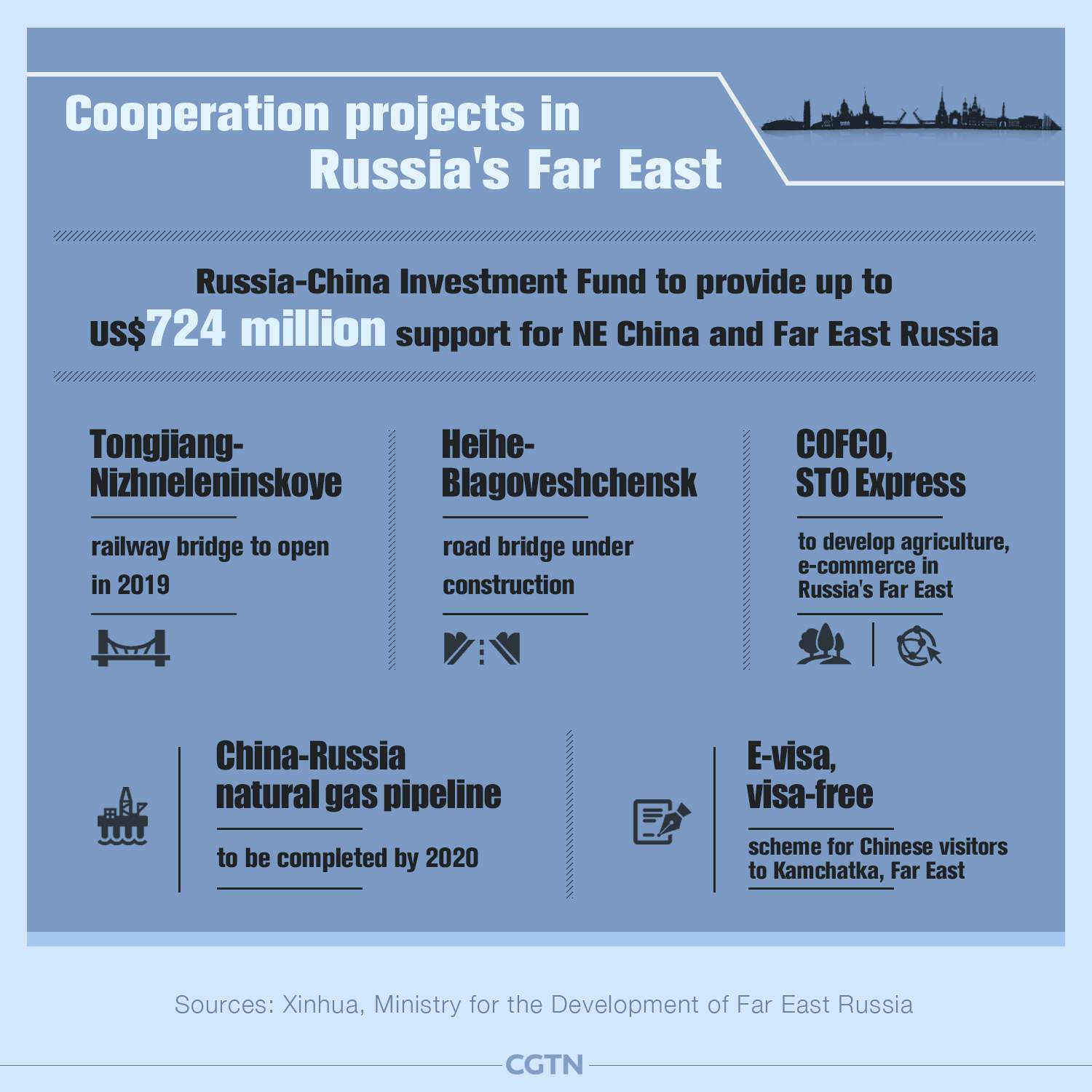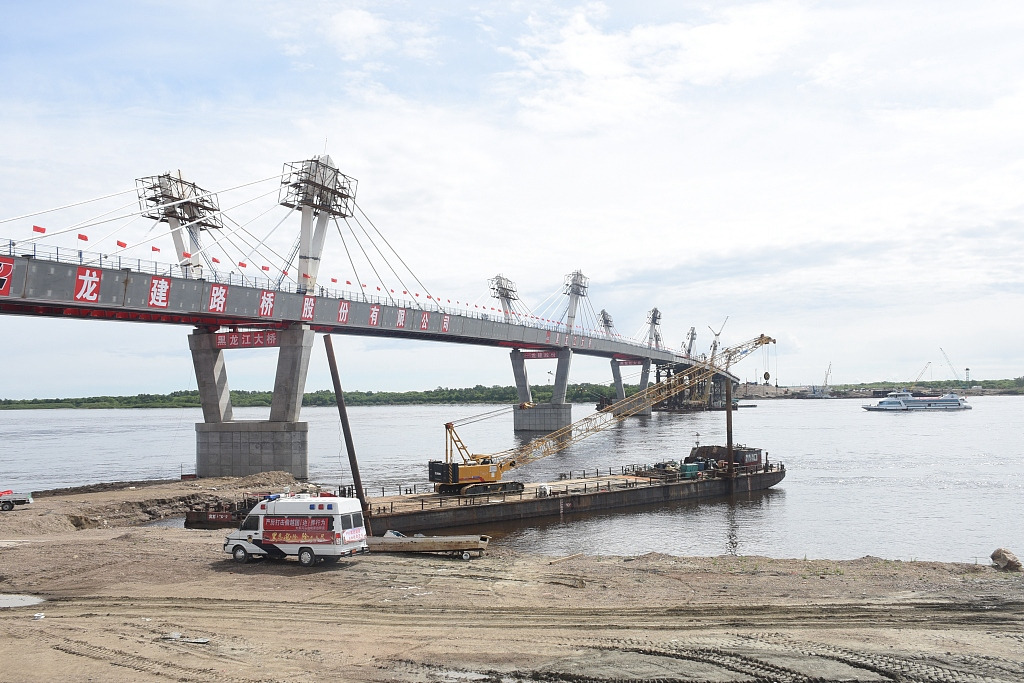
Economy
16:20, 04-Jun-2019
China, Russia Far East cooperation a big boost for business
CGTN

Cooperation between China and Russia has led to rapid development in the Russian Far East, with both sides seeing increasing levels of trade and cross-border energy and infrastructure projects.
The Far Eastern Federal District is Russia's most sparsely populated region, with just over one person per square kilometer. However, it is also the largest Federal District, covering an area more than twice the size of India.
Russian President Vladimir Putin has made the development of the region a domestic priority, promising favorable policies and concessions to Russian and Asian investors looking to pump money into the Far East.

CGTN Infographic
CGTN Infographic
This policy of developing the region is set to see close cooperation with China, which shares a long border with Russia's Far East and Baikal Regions.
Xinhua reported in August 2018 that Chinese Vice Premier Hu Chunhua and Russian Deputy Prime Minister Yury Trutnev reached an agreement on further boosting cooperation between northeast China and the Russian Far East and Baikal Regions.
The agreement includes plans to enhance communication and improve the business environment, facilitate customs clearance, promote connectivity, and create conditions for expanding cooperation in fields such as port logistics, resources development, modern agriculture, and equipment manufacturing.
Cooperation projects that are set for completion in the near future include the China-Russia natural gas pipeline, which should enter operation by 2020.
The enormous energy project, which will see a 3,371-kilometer long Chinese section between Shanghai and the border city of Heihe in northeast China's Heilongjiang Province, will provide China with 38 billion cubic meters of natural gas from Russia each year, according to Xinhua.
The project was jointly established by Russia' Gazprom and the China National Petroleum Corporation, and will connect Heihe to the Russian pipeline at Blagoveshchensk in Amur Oblast.
Other major infrastructure projects to bring China and Russia closer together include the Tongjiang-Nizhneleninskoye railway bridge, which is set to open this year and connect Heilongjiang Province with Russia's Jewish Autonomous Oblast.
The railway bridge will be complemented by the Heihe-Blagoveshchensk road bridge, which will also open to traffic this year. By 2020, Xinhua reports that the bridge will increase passenger traffic to 1.4 million per year, and lead to a ten-fold increase in cargo being transported between the two cities.

The Heihe-Blagoveshchensk road bridge, which is set to open to traffic later this year. /VCG Photo
The Heihe-Blagoveshchensk road bridge, which is set to open to traffic later this year. /VCG Photo
As part of China and Russia's cooperation in the Far East, several private Chinese companies are investing in the region.
China's largest food trade company COFCO has set up a branch in the region, with plans to build a grain warehousing logistics system in the next five years.
Chinese logistics firm STO Express has also set up business in Russia's Far East, with plans to build warehouses for China-Russia e-commerce in a designated zone for cross-border development in Primorsky.
Authorities in both countries are also looking to boost tourism, with an electronic visa scheme established for Russia's Far East. According to the Ministry for the Development of the Russian Far East (MDRFE), 56,000 e-visas were issued in 2018, with more than 42,800 of them going to Chinese nationals.
The MDRFE has also said that a visa-free scheme will be established for Chinese nationals in Kamchatka Krai, a region where tourist numbers doubled in 2018.

SITEMAP
Copyright © 2018 CGTN. Beijing ICP prepared NO.16065310-3
Copyright © 2018 CGTN. Beijing ICP prepared NO.16065310-3